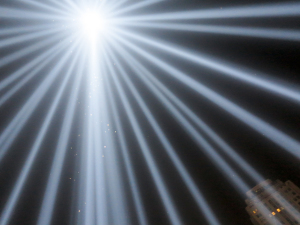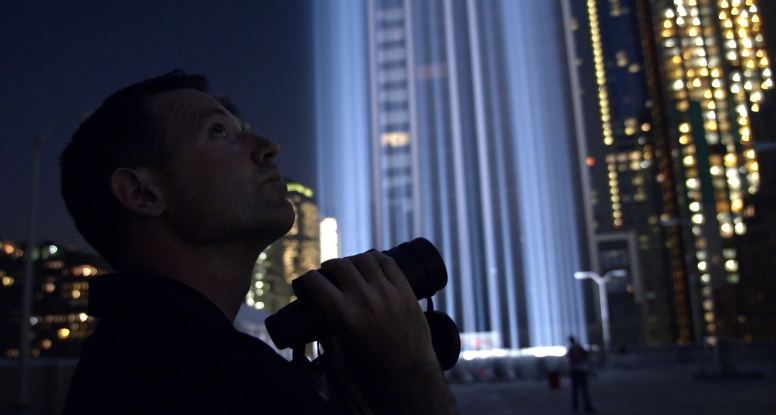The SongbirdSOS film crew ventured to New York City to film with Andrew Farnsworth, a Research Associate of the Cornell Lab of Ornithology during the annual 911 Memorial Tribute in Lights. While there with some volunteers from the New York City Audubon , we also found out more about the exciting and ambitious Bird Cast project, which aims to provide a window into the world of migration at a scale previously unimaginable.
Farnsworth is hopeful, as are his collaborators, this new vision of migratory behavior could ultimately be used to prevent the deaths of millions of birds. In this video clip, Farnsworth explains how cool 21st technology is changing migratory bird research.
Andrew Farnsworth grew up in the greener and quieter suburbs of the city where he now lives, watching the seasons – and weather and most importantly birds – change. Throughout his childhood Andrew says he would wonder about the calls of passing nocturnal migrants, fully aware of the identities of some species and be completely befuddled by others.
As did many students of migration, he read with great interest about the ways to grasp the otherwise unfathomable magnitudes of birds migrating under the cover of darkness, occasionally seeing glimpses of their shapes while watching the moon or by the lights of tall buildings.
When we caught up with Andrew at the 911 Tribute last year, he and members of the Audubon Society were situated on a parking garage roof in Manhattan, at the base of the lights, observing and monitoring the powerful beams for bird action. Our director Su Rynard and the SongbirdSOS crew documented the evening, filming from dusk until almost dawn.
While the powerful lights provided a spectacular opportunity to observe and film migratory birds, the dangers were also apparent. That night they had to shut the lights down several times, which allowed migratory birds that became trapped and circling in the lights, to disperse.

Andrew said the prospects for this year’s Tribute in Light were intriguing. Unlike many previous years, a frontal boundary was approaching the region and generating potential for a large flight of migrants to coincide with the memorial. Thankfully, the passage of the front did not occur until several hours after sunset, and the potentially large number of migrants getting caught in the light did not become a reality that evening.
According to Andrew, “Some birds did fly through the beams on the night of the Tribute, though mostly at high altitude and without stopping and circling. Of interest was the peak in numbers after the winds strengthened with the arriving air mass behind the front. Many seemed to hold off and made their migratory passage through the city the following night, long after the tribute lights had been extinguished.”
Andrew’s also been working on another pilot project that many who track birds will recognize as a long standing goal to create a device to record, detect, classify, and post to a website flight calls of migrating songbirds.
He is doing that in collaboration with other scientists at the Cornell Lab and he encourages volunteer citizen scientists to get involved by contributing their recordings from low-cost but effective microphones like those designed by acoustic monitoring pioneer Bill Evans.
Farnsworth continues to post weekly BirdCast forecasts for four regions of the US based on forecast weather and previous eBird data to give birders a sense of what species will be on the move and in what numbers. There are also weekly analyses for these same regions, highlights from eBird data of which what species actually occurred and what the radar looked like at a typical peak hour of nocturnal movement
The scenes in SongbirdSOS at the 911 Memorial Tribute site are quite beautiful. If you’d like to know when the film is screening near you, please join our community.

